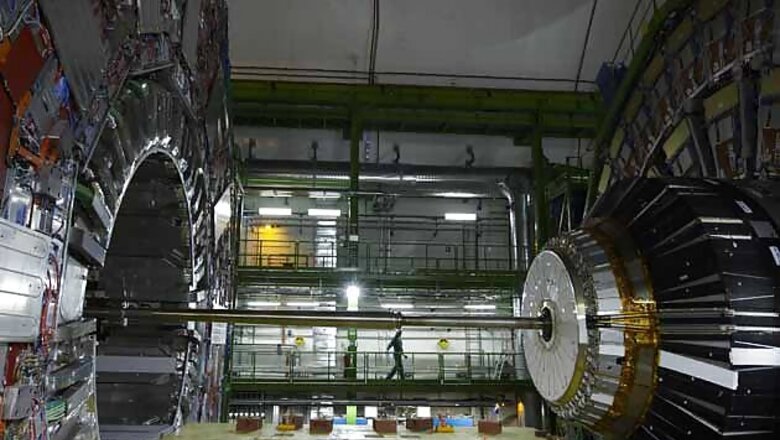
views
Geneva: The Large Hadron Collider (LHC), the world's biggest particle accelerator, is back in action after a two year shutdown and upgrade that saw the machine double its power to speed up the search for 'dark matter'.
On Sunday, a proton beam was back in the 27-kilometre tunnel for the first time since 2013, followed by a second beam rotating in the opposite direction, CERN said.
These beams circulated at their injection energy of 450 gigaelectron volt (GeV). "The return of beams to the LHC rewards a lot of intense, hard work from many teams of people," said Head of CERN's Beam Department, Paul Collier.
"It's very satisfying for our operators to be back in the driver's seat, with what's effectively a new accelerator to bring on-stream, carefully, step by step," said Collier.
Actual collisions will not begin for at least another month, but they will take place with nearly double the energy the LHC reached during its first run.
The beams have arrived a week or so later than originally scheduled, due to a now-resolved electrical fault. The protons are injected at a relatively low energy to begin with. However, engineers hope to gradually increase the beams' energy to 13 trillion electronvolts, double what it was during the LHC's first operating run.
"After two years of effort, the LHC is in great shape," said CERN Director for Accelerators and Technology, Frederick Bordry.
"But the most important step is still to come when we increase the energy of the beams to new record levels," said Bordry. Scientists hope to glimpse a "new physics" beyond the Standard Model of particle physics.
The model describes 17 subatomic particles, including 12 building blocks of matter and 5 "force carriers" - the last of which, the Higgs boson, was detected by the LHC in 2012.
Things beyond the Standard Model have been proposed to explain several baffling properties of the universe, but never directly detected. These include dark energy and dark matter. Dark energy is the all-pervading force suggested to account for the universe expanding faster and faster.
Dark matter is the "web" that holds all visible matter in place, and would explain why galaxies spin much faster than they should, based on what we can see.
By taking matter to states we have never observed before, physicists hope to find something unexpected that addresses some of these questions.
Debris from the tiny but history-making smash-ups might contain new particles, or tell-tale gaps betraying the presence of dark matter or even hidden dimensions.




















Comments
0 comment